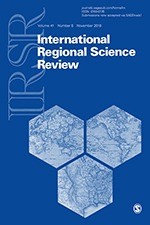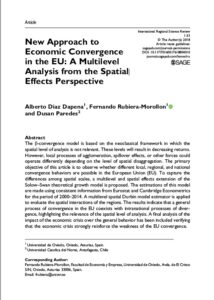We are happy to announce the newest article published by IMAJINE researchers Alberto Diaz Dapena, Fernando Rubiera-Morollon and Dusan Paredes in International Regional Science Review.
The scientific paper published in International Regional Science Review focuses on the β-convergence model based on the neoclassical framework. In this model, the spatial level of analysis used seems to be irrelevant. However, spillover effects, agglomeration economies, and other economic forces could operate differently depending on the level of spatial disaggregation chosen. The primary objective of this article is to observe whether there can be local, regional, and national convergence trends simultaneously coexisting in the European Union (EU) using a multilevel and spatial effects extension of the Solow–Swan theoretical growth model to capture discrepancies among the different spatial levels. Also, a multilevel spatial Durbin model estimator is added to evaluate the spatial interactions of the regions. Results indicate that a general process of convergence in the EU coexists with intra-national divergence processes, highlighting the relevance of the spatial level of analysis employed. A final analysis of the impact of the economic crisis over the general behavior has been included verifying that the economic crisis strongly reinforced the weakness of the EU convergence.
Download the paper directly here: https://journals.sagepub.com/doi/10.1177/0160017618804010
or go to the results section of the IMAJINE website to download the .pdf format version.
The journal International Regional Science Review is an international forum for economists, geographers, planners, and other social scientists to share important research findings and methodological breakthroughs. The journal serves as a catalyst for improving spatial and regional analysis within the social sciences and stimulating communication among the disciplines. IRSR deliberately helps define regional science by publishing key interdisciplinary survey articles that summarize and evaluate previous research and identify fruitful research directions. Focusing on issues of theory, method, and public policy where the spatial or regional dimension is central, IRSR strives to promote useful scholarly research that is securely tied to the real world.
2017 Impact Factor: 1.750
2017 Ranking: 65/108 in Environmental Studies | 28/57 in Planning & Development | 19/40 in Urban Studies
Source: Journal Citation Reports®, 2018 release, a Clarivate Analytics product


